Gathering strong evidence is key in personal injury cases. It’s what helps get fair compensation and ensures justice. But how do injury lawyers investigate these cases? How do they find the evidence needed for a strong claim?
This article dives into how injury lawyers investigate cases. We will look at the methods they use to gather solid evidence. From physical evidence to people’s stories, we’ll explore what kind of proof is crucial. This proof is needed to show who is at fault and the extent of the damage in personal injury cases.
Are you a personal injury attorney wanting to improve how you investigate? Or maybe you’re just curious about what goes on behind the scenes in building a strong injury claim. Either way, this article will give you valuable insights and knowledge.
Let’s explore the world of injury lawyer investigations together. We’ll see how they use evidence to fight for their clients’ rights. And how they work to get the compensation their clients deserve.
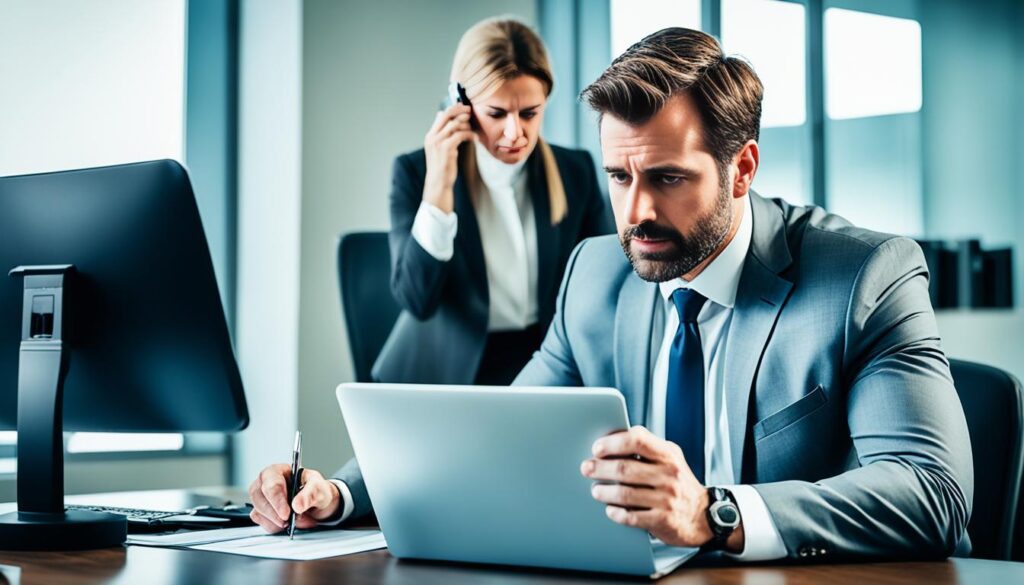
Key Takeaways
- Injury lawyers play a vital role in gathering evidence and building strong claims in personal injury cases.
- Types of evidence commonly used in personal injury cases include physical, documentary, and testimonial evidence.
- Gathering and preserving evidence promptly is crucial to protect crucial information and strengthen the case.
- Evidence is essential to proving liability and damages in personal injury cases.
- By working with experienced personal injury attorneys, victims can ensure their cases are backed by compelling evidence.
The Burden of Proof In Personal Injury Cases
In personal injury cases, the one hurt must show proof. They have to prove their injuries came from someone else’s carelessness. Presenting strong evidence is key to show facts like duty of care and the breach of it.
The idea of duty of care is about having to be careful to not hurt others. One must show the person at fault had a responsibility to act safely.
When someone doesn’t act with care and someone gets hurt, that’s breach of duty. Evidence must show how the careless actions caused harm.
Linking the defendant’s oversight to the injury is crucial. Presenting solid evidence to show the defendant’s action caused the injury is necessary.
Sometimes, the injured person might also be partly at fault. It’s important to show that the main fault lies with the defendant. Evidence should make it clear that the defendant’s actions were the biggest issue.
“The burden of proof in personal injury cases is crucial for winning. By showing evidence of duty of care, breach of duty, and causation, and addressing any self-negligence, one can prove the other’s fault and seek compensation for their losses.”
Evidence is super important for proving who’s at fault in injury cases. This includes medical records, photos of injuries, and documents of damage. Records from the police or insurance, along with expert opinions, strengthen the case. Testimonial evidence from witnesses or experts also adds weight to the claims.
Knowing the importance of proof and strong evidence helps in personal injury cases. This knowledge gives injured people a better shot at justice and getting compensated fairly.
Duty of Care, Breach of Duty, and Causation
| Element | Description |
|---|---|
| Duty of Care | The legal obligation of individuals or entities to act with reasonable care to prevent harm to others. |
| Breach of Duty | Occurs when the defendant fails to fulfill their duty of care, acting negligently or recklessly and causing harm to the plaintiff. |
| Causation | The direct link between the defendant’s breach of duty and the plaintiff’s injuries or damages. |
Types Of Evidence In Personal Injury Cases
Evidence is key in personal injury cases for proving who is at fault. It ensures victims get the right compensation. The main evidence types are: physical evidence, documentary evidence, and testimonial evidence.
1. Physical Evidence
Physical evidence includes things directly involved in the incident. Items like broken vehicles, flawed products, or unsafe areas count. This evidence helps show what caused the injury. Lawyers use it to figure out who is to blame.
2. Documentary Evidence
Documentary evidence involves written records that support the case. This includes police and medical reports, and insurance documents. Such documents provide clear details about the incident. They help lawyers determine how much the victim has lost.
3. Testimonial Evidence
Testimonial evidence comes from people who saw the incident or are involved. It consists of statements from the injured, witnesses, and experts. This type of evidence can assign responsibility. It makes the injured person’s case stronger by adding real-life views.
Using these evidence types, lawyers can form a solid claim. They combine physical, documentary, and testimonial evidence for a full picture. This helps in knowing exactly what happened and ensuring the injured get compensated rightly.
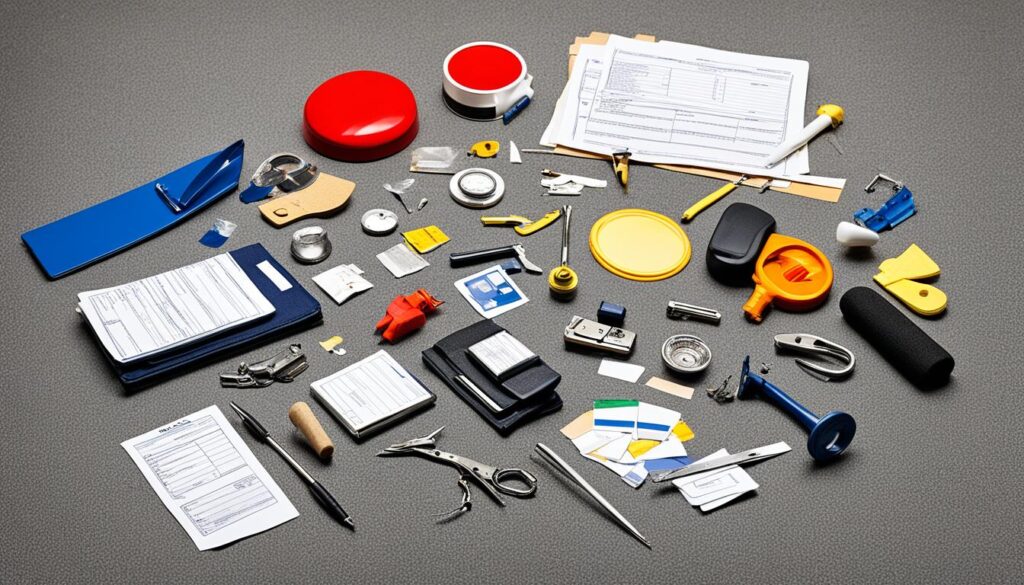
Gathering And Preserving Evidence
Gathering and preserving evidence is key in personal injury cases. To build a strong claim, it’s important to quickly collect key information and keep crucial details safe. Here, we’ll cover the main steps to take to make sure your evidence stays intact.
Photograph Scenes
After an incident, take photos of the scene first. These photos can greatly help by showing the conditions and what happened during the accident. They allow for a visual story that strengthens your case and makes things clear for insurance companies or jurors.
Seek Medical Care
Getting medical help is vital for your health and for preserving evidence. Medical records point out how severe your injuries are and the treatment you received. They are key in figuring out your damages and showing how the incident affected you.
Gather Contact Information
It’s critical to get contact info from everyone involved and any witnesses. This means names, phone numbers, addresses, and emails. With this info, your legal team can reach out to them. It’s key in collecting more evidence and figuring out who is liable.
Preserve Incident Records and Insurance Details
Along with collecting contact info, keep incident and insurance details safe. This includes incident reports, police statements, or records from the workplace. Such documents help outline what happened and give info on who may be at fault. Also, keep clear records of insurance policies and any letters exchanged. This is crucial for any insurance claims or compensation.
By taking these steps quickly, you can protect important information and ensure your personal injury claim is strong. Working with skilled personal injury lawyers who understand how to collect evidence is essential. They can lead you through these steps.

Using Evidence To Prove Liability
Evidence is crucial in personal injury cases. It helps prove who is at fault. Lawyers use it to show the defendant’s negligence. This section looks into different evidence types and their role in personal injury lawsuits.
Codes and Manuals
Building codes and safety guidelines are key evidence types. They set standards that must be followed. If the defendant didn’t follow these, it helps show they were negligent.
Safety Violations
Safety violations are powerful evidence. They show the defendant didn’t care about others’ safety. This includes ignoring workplace safety or traffic laws. Such evidence can greatly affect the lawsuit’s result.
Design Flaws and Manufacturing Defects
Design flaws or defects in products can prove liability, too. If these caused an injury, they’re important evidence. They show the manufacturer or designer’s responsibility.
Testimony and Credibility of Evidence
Witness testimony is vital. Witnesses provide direct accounts of what happened. Expert opinions also support the claim. Both types increase the evidence’s credibility, showing the defendant’s negligence.
“Evidence is key in personal injury cases. By using codes, evidence of violations, and expert opinions, lawyers show negligence. This proves the defendant’s lack of care, helping the plaintiff’s case.” – Legal Expert
Evidence forms the basis of liability claims in personal injury cases. Using a variety of evidence strengthens the plaintiff’s case. It helps argue for compensation and justice effectively.
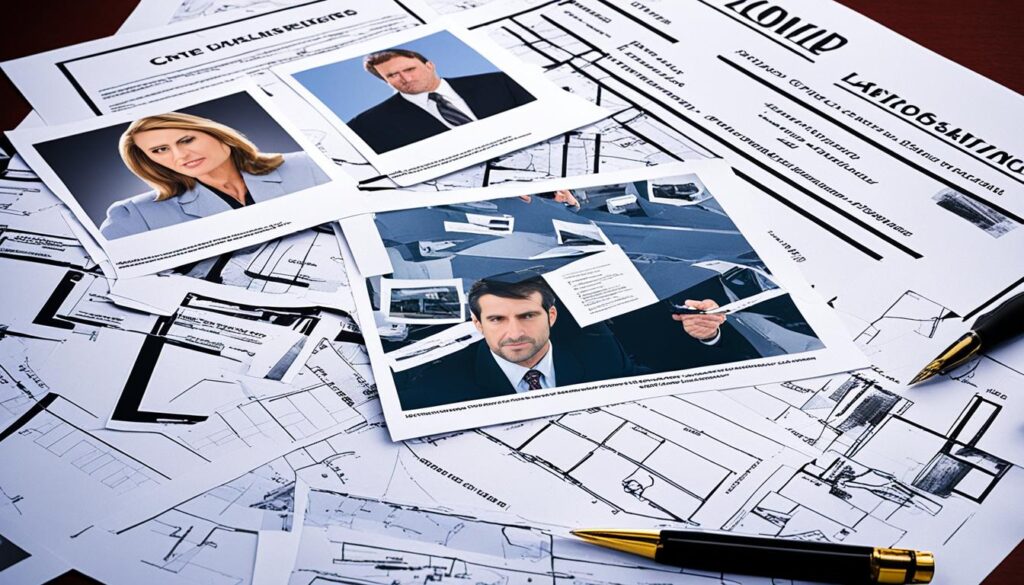
Using Evidence To Prove Damages
Evidence is key in personal injury cases to show both fault and damages. Victims can show how serious their injuries are by using solid evidence. This helps them get the right compensation for their physical, emotional, and money troubles.
Medical Records
Medical records are a top form of evidence in these cases. They include doctor’s notes, tests, and treatment plans. These records prove the injuries and needed medical care. They link the accident to the injuries, showing the cause of damages. Victims use these records to support their claims and the need for money.
Documentation of Damages
Documenting damages well is crucial. This means showing evidence of property damage through photos, repair estimates, and receipts. Also, victims need to keep bills and receipts for medical costs. This includes everything from hospital stays to therapy. Collecting records of extra costs like travel to medical visits strengthens compensation claims. This detailed documentation shows the financial hit from the injury.
Income Loss and Financial Impact
Injuries often lead to big financial problems, including lost income. Victims should collect work records, pay stubs, and tax returns. These documents show what they earned before the accident. If the injury affects their ability to work, experts might be needed to estimate future lost earnings. Showing lost income and financial struggles proves the injury’s economic impact on their life.
Emotional Damage
Personal injuries can also hurt victims emotionally and mentally. They may face issues like anxiety, depression, or PTSD due to the incident. To prove emotional damage, medical records from mental health experts are needed. Testimonies from family and friends about the victim’s suffering help too. Showing strong evidence of emotional pain allows victims to ask for compensation for their unseen injuries.
Using evidence like medical records, documented damages, and records of emotional harm is essential. It helps victims make a strong case for compensation. This evidence doesn’t just show the damages. It also shows the big impact the injury has on their lives. Showing all the damages well increases their chances of a fair outcome in their case.
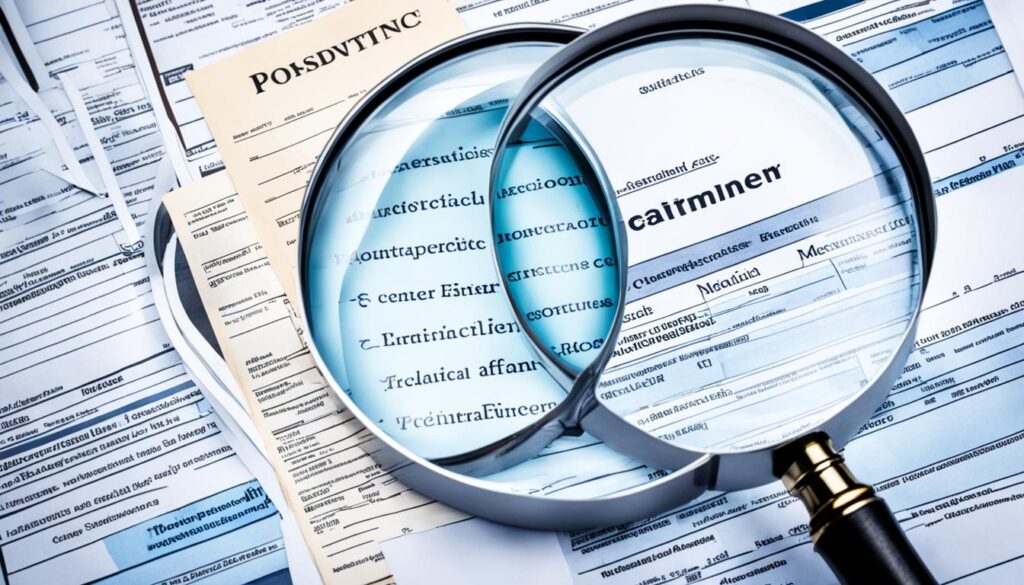
Personal Injury Attorneys and Evidence Gathering
Personal injury attorneys are key in personal injury cases. They gather and present evidence efficiently. Their skills ensure they take the right steps for a strong claim. Let’s explore how they gather evidence effectively.
Initial Investigation
Personal injury attorneys start with a thorough initial investigation. They look at accident reports, police records, and medical documents. This helps them fully understand the case.
Interviewing Witnesses
Witnesses can offer important insights into a case. Personal injury attorneys interview witnesses to gather firsthand accounts. These statements help create a strong narrative for the case.
Consulting Experts
Experts add credibility to a case with their professional opinions. Personal injury attorneys team up with experts like accident reconstructionists. They analyze evidence and provide insights, strengthening the case.
Collecting Physical Evidence
Physical evidence is crucial in showing negligence or liability. Personal injury attorneys collect items like photos and damaged equipment. These items are powerful visual aids in court.
Obtaining Surveillance Footage
Surveillance footage is often key in today’s world. Personal injury attorneys work to get footage, like CCTV or dashcam videos. This evidence can be a game-changer in court.
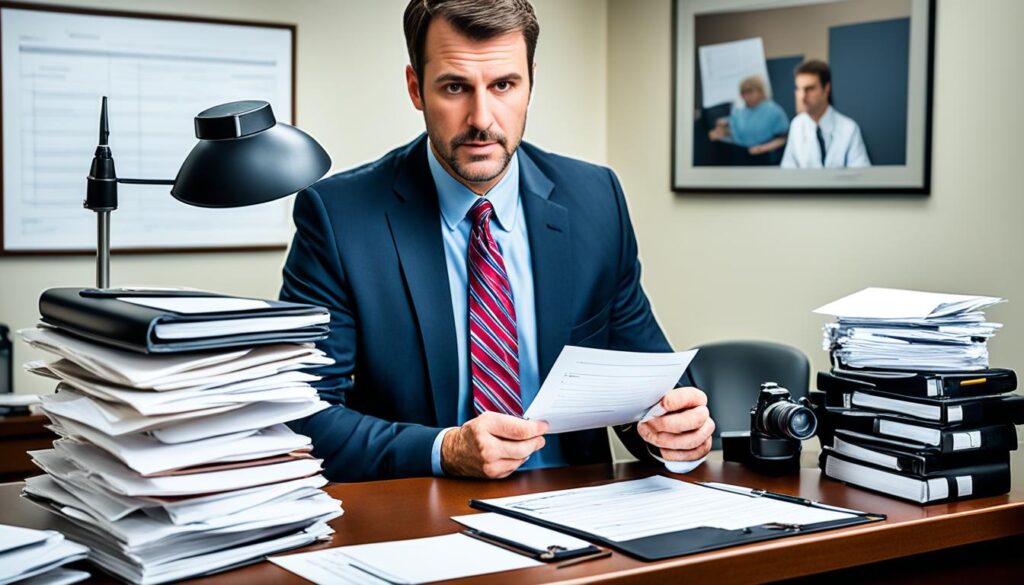
“Personal injury attorneys are adept at gathering and presenting evidence, ensuring that victims have the best chance at achieving a favorable outcome in their cases.”
Presenting Evidence in New Mexico Courts
When bringing personal injury cases to New Mexico courts, knowing how to present evidence is key. This includes understanding what evidence is allowed, the role of expert witnesses, and more. Knowledge of jury instructions and settlement talks also helps win a case.
Admissibility of Evidence
Evidence must be allowed in court to be considered. New Mexico has specific rules for what’s allowed. Lawyers must follow these to make sure their evidence is valid. Knowing these rules helps lawyers choose and present strong evidence.
Jury Instructions
Jury instructions help jurors understand the law. Lawyers can suggest instructions to help their case. Good instructions can influence how jurors see the evidence.
Expert Witnesses
Expert witnesses explain complex ideas to the jury. They can talk about medical issues or other important facts. Good expert testimony makes a case stronger.
Settlement Negotiations
Settlement talks are crucial, even outside court. Lawyers use evidence to negotiate fair deals. Good negotiations can lead to a satisfying outcome without a trial.
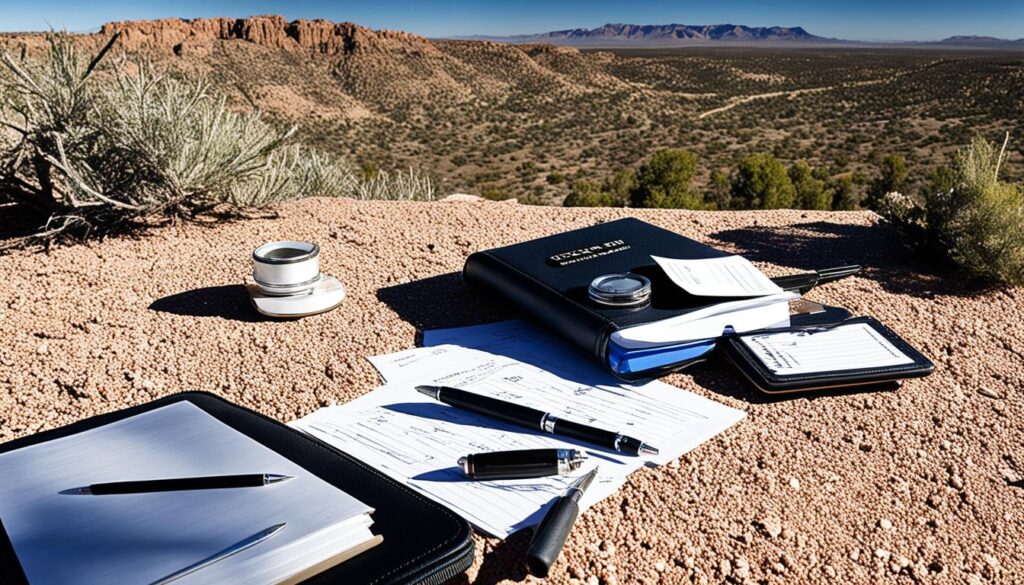
Understanding evidence, jury instructions, expert witnesses, and settlements is vital. With this knowledge, personal injury victims in New Mexico can fight for what they deserve.
The Role of Evidence in Personal Injury Cases
Evidence is vital in personal injury cases. It supports the victim’s claims for compensation and justice. It also has a big impact on the case’s outcome. The evidence gathered determines if the victim gets the compensation they deserve.
Collecting evidence is a key part of these cases. This means getting all sorts of proof that back up the victim’s claims. This includes documents, what witnesses say, opinions from experts, and physical proof. By carefully gathering evidence, lawyers build a strong case for their clients.
After collecting evidence, it must be shown in court well. This is where a lawyer’s skills are important. They need to organize and show the evidence clearly. This helps convince the judge or jury. Lawyers know the law well and how to talk in court. They use these skills to support their client’s case.
Evidence is fundamental in personal injury cases. It proves who is at fault and sets the compensation amount. Without it, showing the victim’s injuries and losses is tough.
“Evidence is the backbone of a personal injury case, providing the necessary proof to support the victim’s claims and seek justice.”
Evidence is key for fair compensation too. It shows the impact of injuries on the victim’s life. Lawyers present all proofs to argue for their clients. This covers medical costs, lost earnings, and more.
The aim of evidence in these cases is justice for the victim. It lets victims ask for what they deserve. It helps stop similar future incidents.
The Importance of Collaborating with Experienced Attorneys
Working with skilled lawyers is needed to handle evidence right. Lawyers with personal injury experience know how to gather and show evidence well. They meet legal standards for evidence in court. They work hard to build a strong case.
Victims get a lot from lawyers’ know-how. Good lawyers increase the chances of a good case outcome. They help with advice on evidence and guide through legal steps.
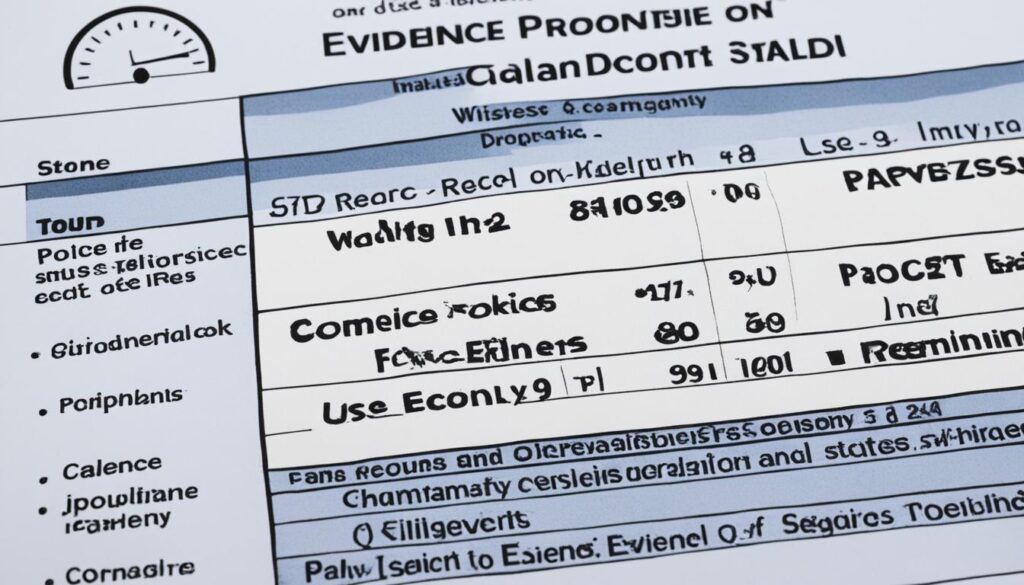
| Evidence Importance | Evidence Gathering | Evidence Presentation |
|---|---|---|
| Supports victims’ claims for compensation and justice | Collected through diligent investigation and documentation | Presented to establish liability and quantify damages |
| Crucial for proving liability and securing fair compensation | Includes physical evidence, witness statements, and expert opinions | Presented in a clear and compelling manner in court |
| Ensures victims’ rights are upheld and negligent parties are held accountable | Handled by experienced personal injury attorneys | Advocated by skilled attorneys for fair compensation |
By understanding the importance of evidence and working with experienced lawyers, victims can make their cases stronger. This improves their chances of getting the right compensation and justice.
Contact an Experienced Personal Injury Attorney Today
If you or a loved one has been hurt by someone else’s carelessness, getting help from a skilled personal injury attorney is key. These lawyers are experts at helping people who have been injured because of others. By finding a trusted personal injury lawyer in your area, you start on the path to getting the compensation you deserve.
Working with a personal injury attorney gives you a big advantage. They’re really good at gathering all the evidence needed to support your case. They collect important information, talk to experts, and find witnesses. This helps to show who was at fault and how much harm you’ve suffered.
Having a personal injury attorney means you’re more likely to get the money and justice you’re owed. They’ll talk to the insurance company of the person responsible to make sure you get a fair deal. If they can’t get a good settlement outside of court, they are ready to fight for you in front of a judge and jury.